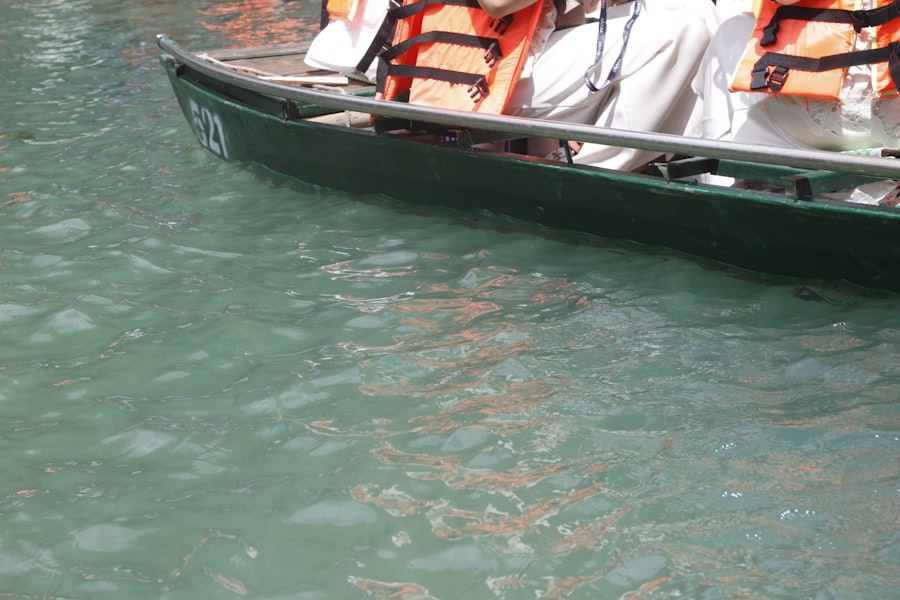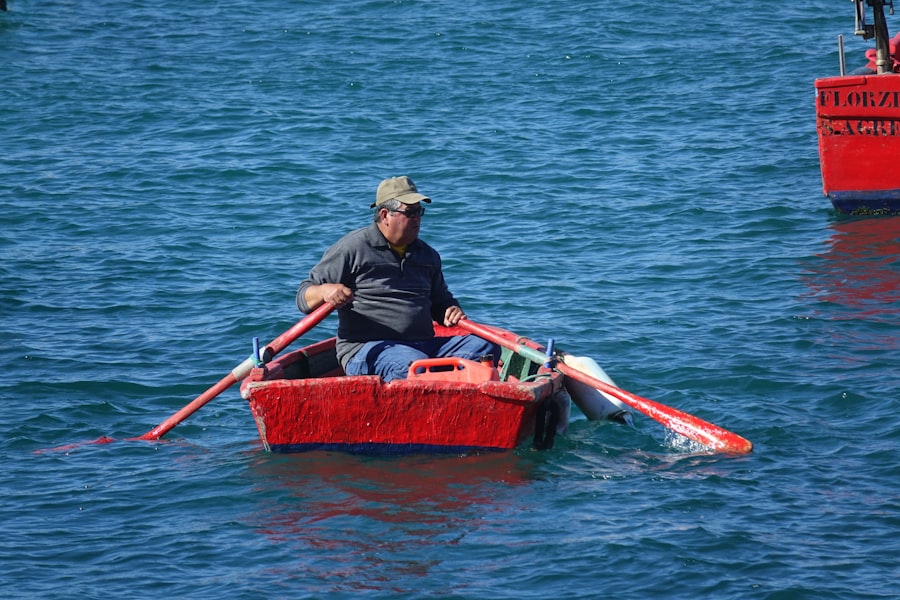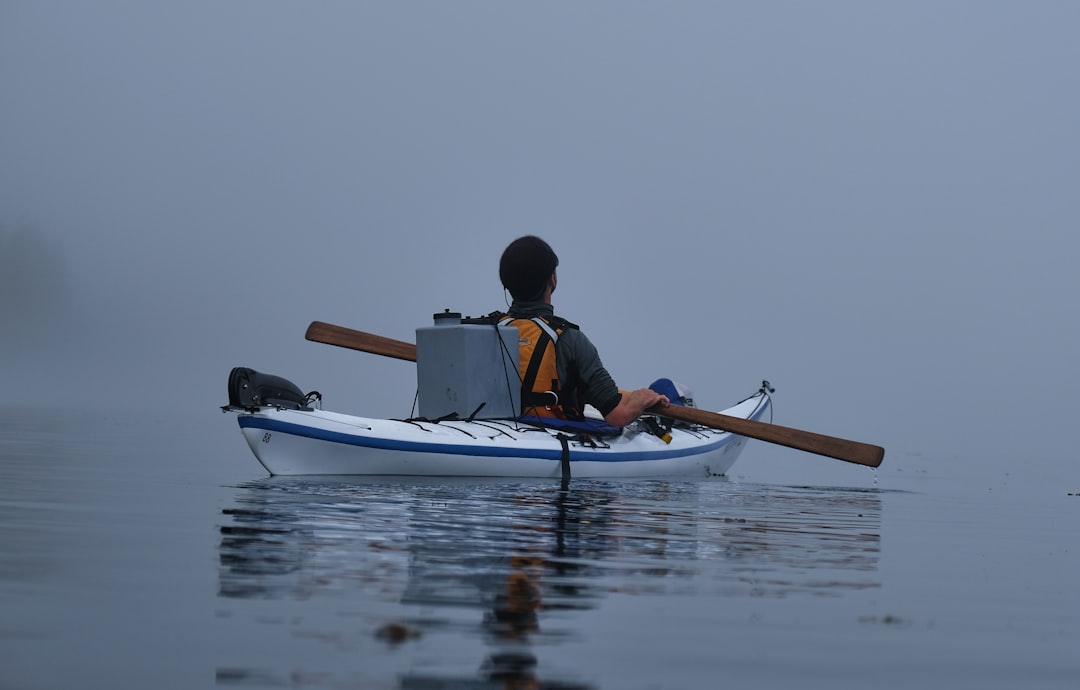Rowing the Drake Passage is often regarded as one of the most formidable challenges in the world of adventure sports. This stretch of water, which separates South America from Antarctica, is notorious for its unpredictable weather, turbulent seas, and strong currents. The passage is not only a physical test but also a mental one, as rowers must contend with the relentless forces of nature that can change in an instant.
The combination of high winds, towering waves, and freezing temperatures creates an environment that demands not only strength and endurance but also resilience and adaptability. The Drake Passage has earned its reputation as a graveyard for ships, with countless vessels having succumbed to its wrath over the centuries. For those daring enough to attempt rowing across this treacherous expanse, the stakes are high.
The journey requires meticulous planning and preparation, as well as a deep understanding of the risks involved. Rowers must be ready to face not only the physical challenges posed by the sea but also the psychological hurdles that come with isolation and uncertainty. The Drake Passage is not just a body of water; it is a crucible that tests the limits of human endurance and spirit.
Key Takeaways
- Rowing the Drake Passage presents a significant challenge due to its treacherous waters and extreme conditions.
- Preparation and training are essential for the expedition, including physical and mental conditioning, as well as acquiring the necessary skills and knowledge.
- The Drake Passage has a rich history and holds great significance as a maritime route and a unique natural phenomenon.
- Proper equipment and gear are crucial for the journey, including specialized rowing boats, safety gear, and navigation equipment.
- The team of rowers must have extensive experience and expertise in rowing and navigating in extreme conditions to undertake the expedition.
Preparation and Training for the Expedition
Preparing for an expedition across the Drake Passage involves a comprehensive training regimen that encompasses both physical conditioning and logistical planning. Rowers must build their strength and stamina through rigorous workouts, often incorporating long-distance rowing sessions, strength training, and cardiovascular exercises. This physical preparation is crucial, as the demands of rowing in such extreme conditions can quickly deplete even the most seasoned athletes.
Additionally, team cohesion is essential; rowers must learn to work together seamlessly, developing communication skills and trust that will be vital during the journey. Logistical planning is equally important in preparation for the expedition. This includes selecting the right equipment, mapping out potential routes, and understanding weather patterns that could impact the journey.
Rowers often spend months researching and preparing for every possible scenario they might encounter at sea. They must also familiarize themselves with navigation techniques and emergency protocols to ensure their safety throughout the expedition. The combination of physical training and meticulous planning lays the foundation for a successful crossing of the Drake Passage.
The History and Significance of the Drake Passage

The Drake Passage holds a significant place in maritime history, serving as a critical route for explorers, scientists, and adventurers alike. Named after Sir Francis Drake, who navigated these waters in the late 16th century, the passage has long been a gateway to Antarctica and a site of exploration for those seeking to understand the southernmost continent. Its historical significance is underscored by the many expeditions that have traversed its waters, each contributing to our knowledge of geography, climate, and marine life.
Beyond its historical context, the Drake Passage is also significant in terms of its ecological importance. The waters are rich in biodiversity, serving as a habitat for various marine species, including whales, seals, and seabirds. The passage plays a crucial role in global ocean currents and climate regulation, making it an area of interest for scientists studying climate change and its impacts on marine ecosystems.
Understanding the Drake Passage’s history and significance enhances the appreciation for those who dare to row its challenging waters, as they are not only undertaking a physical feat but also connecting with a rich legacy of exploration.
The Equipment and Gear Needed for the Journey
| Item | Quantity | Description |
|---|---|---|
| Hiking Boots | 1 pair | Sturdy, waterproof boots for rough terrain |
| Backpack | 1 | Large enough to carry all gear and supplies |
| Tent | 1 | Lightweight and weatherproof for overnight stays |
| Sleeping Bag | 1 | Insulated for warmth and comfort |
| Water Bottle | 2 | Durable and reusable for staying hydrated |
| Map and Compass | 1 set | For navigation in remote areas |
| First Aid Kit | 1 | Essential for treating minor injuries |
The equipment and gear required for rowing across the Drake Passage are critical to ensuring safety and success during the expedition. Rowers must invest in high-quality boats designed specifically for open-water conditions. These boats are typically lightweight yet sturdy, allowing them to withstand harsh weather while providing enough buoyancy to navigate turbulent waves.
Additionally, oars must be durable and ergonomically designed to facilitate efficient rowing over long distances. Clothing and personal gear are equally important in preparing for the extreme conditions of the Drake Passage. Rowers need waterproof and insulated clothing to protect against freezing temperatures and potential splashes from waves.
Layering is essential; thermal base layers, waterproof outer shells, and insulated gloves ensure that rowers remain warm and dry throughout their journey. Safety equipment such as life jackets, flares, and emergency beacons are also vital components of their gear, providing peace of mind in case of emergencies. The right equipment not only enhances performance but also plays a crucial role in ensuring the safety of those brave enough to take on this formidable challenge.
The Team of Rowers and Their Experience
The success of any expedition across the Drake Passage hinges on the strength and experience of the team involved. Each member brings unique skills and backgrounds that contribute to the overall dynamic of the group. Many rowers have extensive experience in adventure sports or have participated in previous long-distance rowing expeditions.
This collective experience fosters a sense of camaraderie and trust among team members, which is essential when facing the uncertainties of open water. In addition to physical prowess, mental fortitude is a key attribute among team members. Rowing across such a challenging passage requires not only endurance but also problem-solving skills and emotional resilience.
Team members often undergo psychological training to prepare for the mental challenges they may encounter during their journey. This preparation helps them develop strategies for coping with stress, fatigue, and isolation while fostering a supportive environment where they can rely on one another during difficult moments.
Navigating the Treacherous Waters of the Drake Passage

Navigating the waters of the Drake Passage is an intricate dance between skillful rowing and keen awareness of environmental conditions. Rowers must constantly monitor weather patterns, wave heights, and currents to make informed decisions about their route. The passage is known for its rapidly changing conditions; what may start as calm waters can quickly escalate into tumultuous waves driven by fierce winds.
This unpredictability requires rowers to remain vigilant and adaptable throughout their journey. Using advanced navigation tools such as GPS devices and marine charts is essential for safely traversing these waters. However, traditional navigation skills remain invaluable; understanding how to read ocean currents and weather patterns can make all the difference in ensuring a safe passage.
Team members often take turns at navigation duties, allowing them to share knowledge while keeping everyone engaged in the process. This collaborative approach not only enhances safety but also fosters a sense of shared responsibility among team members as they work together to conquer one of nature’s most challenging environments.
Wildlife Encounters and Natural Wonders Along the Way
One of the most rewarding aspects of rowing across the Drake Passage is the opportunity to encounter diverse wildlife and experience breathtaking natural wonders along the journey. The waters teem with life; rowers may spot majestic whales breaching in the distance or playful seals basking on ice floes. Seabirds often accompany them on their journey, soaring gracefully above as they navigate through this stunning landscape.
The beauty of the Antarctic region is unparalleled; towering icebergs glisten under the sun while dramatic mountain ranges rise majestically from the icy shores. These natural wonders serve as reminders of nature’s power and fragility, inspiring awe among those who venture into this remote part of the world. Each wildlife encounter becomes a cherished memory for rowers, reinforcing their connection to nature while highlighting the importance of conservation efforts in preserving these pristine ecosystems.
Overcoming Adversity and Challenges During the Expedition
Despite thorough preparation, rowers inevitably face adversity during their expedition across the Drake Passage. From equipment malfunctions to sudden weather changes, challenges can arise at any moment, testing both physical limits and mental resolve. Team members must remain adaptable, drawing on their training and experience to find solutions in high-pressure situations.
One common challenge faced by rowers is fatigue; long hours spent battling waves can take a toll on even the most seasoned athletes. To combat this fatigue, teams often implement strategies such as rotating rowing shifts or incorporating rest periods into their schedule. Maintaining morale becomes crucial during these times; encouraging words or shared stories can uplift spirits when faced with exhaustion or discouragement.
Overcoming adversity not only strengthens individual resolve but also solidifies team bonds as they navigate through difficulties together.
The Mental and Physical Demands of Rowing in Extreme Conditions
Rowing across the Drake Passage demands an extraordinary level of mental and physical endurance from each team member. Physically, rowers must maintain peak performance despite harsh conditions; cold temperatures can lead to muscle stiffness while relentless waves challenge their strength and coordination. Training prepares them for these demands, but nothing can fully replicate the intensity experienced during actual rowing.
Mentally, rowers face unique challenges that test their resilience. Isolation at sea can lead to feelings of loneliness or anxiety; maintaining focus becomes essential when navigating treacherous waters or dealing with fatigue. Teams often employ mental strategies such as visualization techniques or mindfulness practices to stay centered amidst chaos.
By fostering a strong mental game alongside physical training, rowers equip themselves with tools necessary for success in extreme conditions.
Celebrating the Achievement: Reaching the End of the Passage
Reaching the end of the Drake Passage is not just an endpoint; it represents a monumental achievement that embodies perseverance, teamwork, and adventure spirit. As rowers approach their destination after days or weeks at sea, emotions run high—relief mingles with joy as they reflect on their journey together. Crossing this formidable stretch becomes more than just completing a physical challenge; it signifies triumph over adversity.
These moments foster camaraderie among team members who have faced trials together; they emerge stronger not only as athletes but also as friends bonded by shared experiences in one of nature’s most challenging environments.
Lessons Learned and Reflections on the Experience
The experience of rowing across the Drake Passage leaves an indelible mark on each participant’s life—a tapestry woven with lessons learned through struggle and triumph alike. One key takeaway is often an enhanced appreciation for nature’s beauty coupled with respect for its power; witnessing firsthand how quickly conditions can change instills humility within adventurers who dare to challenge it. Additionally, many rowers reflect on personal growth achieved through this expedition—discovering inner strengths they never knew existed while forging deep connections with teammates who supported them throughout their journey.
These reflections serve as reminders that true adventure lies not just in reaching destinations but also in embracing challenges along the way—transforming obstacles into opportunities for growth both individually and collectively. In conclusion, rowing across the Drake Passage is an extraordinary endeavor that tests human limits while offering profound insights into nature’s majesty and resilience within oneself. Each expedition becomes a unique story filled with challenges overcome, bonds forged, and lessons learned—an adventure that resonates long after reaching its final destination.
Rowing across the Drake Passage is a formidable challenge that tests the limits of human endurance and resilience. This treacherous stretch of water, known for its unpredictable weather and rough seas, has been the site of numerous daring expeditions. For those interested in learning more about the geographical and historical significance of such adventures, an insightful article can be found on MyGeoQuest. This resource delves into various geographical quests and challenges, providing a broader context for understanding the allure and danger of the Drake Passage. To explore more about these fascinating topics, visit the article on com/sample-page/’>MyGeoQuest.
WATCH NOW! Drake Passage: Earth’s Deadliest Waters Revealed
FAQs
What is the Drake Passage?
The Drake Passage is the body of water between the southern tip of South America and the northern tip of the Antarctic Peninsula. It is known for its rough seas and challenging weather conditions.
What is rowing the Drake Passage?
Rowing the Drake Passage refers to the extreme challenge of rowing a boat across the treacherous waters of the Drake Passage. It is considered one of the most difficult rowing challenges in the world due to the strong winds, high waves, and cold temperatures.
Has anyone successfully rowed the Drake Passage?
Yes, in 2019, a team of four women successfully rowed across the Drake Passage, becoming the first female team to complete the journey. Their expedition took 54 days to complete.
What are the dangers of rowing the Drake Passage?
The dangers of rowing the Drake Passage include extreme weather conditions, including strong winds, high waves, and cold temperatures. The passage is also known for its unpredictable and rapidly changing weather patterns, which can pose a significant risk to rowers.
What type of boat is used for rowing the Drake Passage?
Specialized ocean rowing boats are typically used for rowing the Drake Passage. These boats are designed to withstand the harsh conditions of the open ocean and are equipped with necessary safety and navigation equipment.
